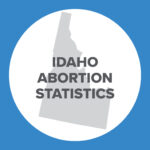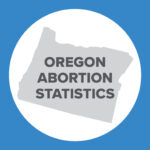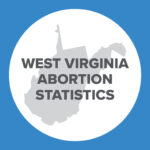The Evolution of “Self-Managed” Abortion: Does the Safety of Women Seeking Abortion Even Matter Anymore?

This is Issue 77 in the On Point Series.
A particularly malignant form of “misinformation” is being spread to women today. Flawed information regarding “self-managed” abortion has the potential to seriously injure the women I care for as an obstetrician/gynecologist.
The term “self-managed” abortion has no standard definition. Elective abortion was widely legalized in the U.S. in 1973 due to concerns about safety. It was alleged by abortion advocates that 5,000-10,000 women died yearly from unsafe, “self-managed” or illegal abortions before the Roe v. Wade decision, although the CDC documented only 39 maternal deaths from abortions in 1972.[i] It was often assumed that these “self-managed” abortions were performed via coat-hanger in unsterile settings, but it has since been documented that 90% were performed by health care providers via standard surgical techniques, albeit illegally.[ii] After legalization, these providers came out of the shadows to provide the same services with many of the same risks. Since that time, as abortion became widely available, “self-managed” abortion came to imply using abdominal trauma, hormones, herbal concoctions, or other substances without an abortionist’s supervision. Performing an abortion without the supervision of an abortionist is still considered dangerous, as demonstrated by a 2017 survey of abortion-providing members of the Society of Family Planning, which found that one-third had seen complications as a result of “self-managed” abortion, and only half felt it was safe.[iii]
Since the time of Roe, abortion has become much more common and easy to obtain. Its widespread availability has led many women in crisis to fall into this action reflexively, often under coercion from partners, parents, friends and even employers. Researchers have documented adverse physical complications[iv], mental health complications[v], and negative impact on future pregnancies[vi], proving that abortion is not without potential for harm, even when legally regulated.
In the 2021 legislative session, Texas passed SB 8, which prohibits abortion after a fetal heartbeat can be detected. This law does not make all abortion illegal, allowing exceptions in cases of medical emergency, and requiring that non-emergency abortions be performed early in the pregnancy when it is safer for a woman. Pregnancy help centers in Texas have discovered that many women, when they discover an abortion is not readily available, develop a new attitude toward their pregnancy and welcome their child. There is no evidence that all women who consider abortion will follow through with the action despite obstacles. Some activist groups are facilitating travel to border states like Oklahoma or New Mexico for women seeking abortions. Others are recommending a much more dangerous action: obtaining the less-effective component of the abortion pill regimen, misoprostol, from Mexico.
A recent Vice News podcast promoted this action. It defined “self-managed” abortion as “when a person uses medications to do their own abortion without going to a doctor.” The report then focused exclusively on abortion advocates who are providing only one of the two components of the standard U.S. medical abortion regimen, misoprostol, to desperate women. To fully understand the dangers of this approach, one needs to understand how medical abortions are usually administered, and how with a verbal sleight of hand, a much more dangerous approach is substituted.
The medical abortion pill regimen approved by the U.S. Food and Drug Administration (FDA) consists of two chemicals. The first, mifepristone (Mifeprex or RU486), blocks progesterone receptors to cut off hormonal support for the pregnancy, resulting in disruption of the placenta and causing embryonic or fetal death. The second, misoprostol (Cytotec), is taken 24-48 hours later to induce contractions to expel the unborn baby and placenta.[vii] Mifepristone is distributed in accordance with a Risk Evaluation and Mitigation Strategy (REMS), a safety strategy applied to medications that have potential serious risks associated with them.[viii] To decrease the likelihood of ruptured ectopic pregnancies, hemorrhage, infection and retained pregnancies requiring surgery, mifepristone was initially only approved up to 49 days’ gestational age, the provider was registered after specific training, the chemical was only to be dispensed in certain healthcare settings, and the patients were to be informed of the risk of serious side effects. Mifepristone abortion providers were to be able to accurately determine the gestational age, confirm an intrauterine location of the pregnancy, and intervene surgically if the chemical abortion was unsuccessful or a complication resulted.
Alternatively, the abortionist could have an agreement with another doctor and facility capable of providing this care. Complication reporting was mandated, as was a 14-day follow-up visit for the woman. Finally, a black-box warning was assigned. From the original label: “If Mifeprex results in incomplete abortion, surgical intervention may be necessary. Prescribers should determine in advance whether they will provide such care themselves or through other providers. Prescribers should also give patients clear instructions on whom to call and what to do in the event of an emergency following administration of Mifeprex.” In addition, chemical abortion was contraindicated if the woman had no access to medical facilities for emergency services.[ix]
A supplemental application was approved by the FDA in 2016, which loosened these restrictions. Use was extended until 70 days’ gestational age, despite very few studies and much higher failure rates in later gestational ages. There was modification of the dose, timing, and route of administration. Abortionists were no longer required to report a complication unless it resulted in a woman’s death, nor was a follow-up visit required.[x]
Although U.S. abortion advocates reassure the public that chemical abortion is as safe as Tylenol or a shot of penicillin, they make these claims by analyzing non-mandatory complication reporting that is known to be incomplete, undoubtedly underestimating complications.[xi] Less-biased studies available internationally give a far different picture of the safety of medical abortions. Epidemiological studies in Finland are of better quality than those in the U.S. because single-payer healthcare and meticulous medical record-keeping ensure that all pregnancies and all medical events are accurately recorded. A study of more than 42,000 women receiving abortions at less than seven weeks’ gestational age documented that adverse events occurred in one in five women who had medical abortions, and almost six percent required surgery. The rate of complications was four times higher in medical than in surgical abortions.[xii] Another Finnish study of 18,000 women found an eight percent rate of surgery needed for medical abortion failures in the first trimester, and an almost 40 percent needed surgery rate in the second trimester.[xiii] Finally, a meta-analysis of all available mifepristone/misoprostol studies worldwide, including more than 47,000 women, found a 4.8 percent abortion failure rate, and 1.1 percent continuing pregnancies.[xiv] Thus, even when chemical abortion with mifepristone and misoprostol is utilized at less than seven weeks gestation as allowed by Texas law (in the absence of a heartbeat), it would be anticipated that 5-8% of these women would have failed abortions requiring surgery.
Though some might consider chemical abortions performed under the REMS supervision to be “self-managed” abortions because the woman suffers her abortion alone[xv], the term has taken an even more ominous turn during the Covid-19 pandemic when the FDA temporarily (April 2021), and then permanently (December 2021), withdrew the requirement that mifepristone be administered in-person. This was justified by studies comparing “telemedicine abortions” to “in-person abortions” finding similar outcomes, but the diminished regulation allows mifepristone provision without an opportunity for the essential pre-abortion physical examination, ultrasound, and labs (which were required in the telemedicine studies); and opens the door to significantly more complications for women. Women have begun ordering chemical abortion pills over the internet, and many times a doctor is never involved.
So, how could these “unsupervised, self-managed” abortions harm women (noting the 5-8% failures previously documented even when the abortions were “supervised, self-managed”)?
Inaccurate underestimation of gestational age increases the likelihood of failures. The assumption is made that a woman will be able to accurately calculate her pregnancy’s gestational age based on a last menstrual period (LMP) calculator when ordering pills on-line, but clinical experience suggests otherwise. A woman may have irregular menses or implantation bleeding, which she may assume is a normal period even though she is already pregnant. She may have forgotten when she had a period or conceived while on contraception. Thus, it is a frequent occurrence for a woman to underestimate gestational age by a month or more.[xvi] A review of over 33,000 chemical abortions revealed that failures of chemical abortions requiring surgical completion steadily increase as gestational age increases. Nearly 2 percent (1.9%) failed at < 7 weeks, 3.3% failed between 7-8 weeks, 4.8% failed between 8-9 weeks, and 6.9% failed between 9-10 weeks.[xvii] Only 332 women were studied at the 9-10 week-range, and their ongoing pregnancy rate was almost 3%.[xviii] If a woman miscalculates her pregnancy’s gestational age and has entered the second trimester when she ingests mifepristone and misoprostol, the likelihood that she will require surgery increases dramatically. A Finnish records-linkage study of over 18,000 women comparing first-trimester to second-trimester chemical abortions found 38.5% of second-trimester abortions required surgical completion (versus 7.9% in the first trimester). Additionally, 4% of the later abortions were complicated by infections (versus 1.9% of the earlier ones).[xix]
These failure rates are not negligible, particularly when medical resources need to be conserved during the ongoing Covid-19 pandemic. Most of the women with failed abortions will present to an emergency room frightened and bleeding heavily, where they will often require immediate surgery and sometimes hospitalization for blood transfusion or intravenous antibiotics. The assumption that a woman will follow up with the abortionist for her emergency has not been the typical U.S. experience.
Failure to diagnose an ectopic pregnancy is a serious and sometimes deadly medical error. Ultrasound has always been considered the gold standard for diagnosis of an ectopic pregnancy. The lack of an identifiable gestational sac in the uterus at a certain gestational age or HCG level necessitates additional testing until the location of the developing embryo can be determined.[xx] Even with routine pre-abortion ultrasound, ectopic pregnancies are sometimes missed. Omitting ultrasound entirely will increase the likelihood of failing to make the diagnosis. Mifepristone and misoprostol exert their effects on the uterine lining, so when an embryo is implanted in another location, the chemical abortion regimen will not end the pregnancy. Continued growth may cause the Fallopian tube to rupture, or cause bleeding if the embryo is implanted on another vascular organ. Catastrophic hemorrhage in these situations sometimes leads to maternal deaths. There are many risk factors for ectopic pregnancies, including previous pelvic or abdominal surgery, certain sexually transmitted infections (especially chlamydia, which is diagnosed in 5% of women age 15-24[xxi]), pelvic inflammatory disease, endometriosis, cigarette smoking, age older than 35 years, history of infertility, and use of artificial reproductive technology, but half of women with ectopic pregnancies do not have any risk factors.[xxii] The 2018 American College of Obstetricians and Gynecologists’ (ACOG) practice bulletin on ectopic pregnancy states, “Tubal ectopic pregnancy in an unstable patient is a medical emergency that requires prompt surgical intervention.”[xxiii] Ectopic pregnancy, which occurs in 2% of recognized pregnancies, accounts for 13% of maternal deaths.[xxiv] A woman who experiences ectopic warning symptoms, such as pain or bleeding, while undergoing a chemical abortion may be less likely to report them to a health care provider, because she has been warned to expect just such symptoms as a sign that the abortion drugs are working. A woman is 30% more likely to die from an ectopic pregnancy while undergoing an abortion than if she had an ectopic pregnancy but had not sought an abortion.[xxv]
Unsupervised chemical abortion fails to consider or screen for reproductive coercion. Previous FDA protocol required the in-person dispensing of mifepristone. One reason for this limitation was to make sure a woman has been counseled and desires the abortion during the informed consent process, and there is an opportunity to screen for coercion. Potential for misuse and coercion is high when there is no way to verify who is consuming the drug and whether she is doing so willingly. Lack of supervision ignores the opportunity for sex traffickers, domestic abusers, and men who do not want to become fathers to surreptitiously give abortion pills to women when these drugs can be easily obtained by anyone. It has been documented that many women experiencing sex trafficking have been forced into multiple abortions. Interaction with the health care system is an opportunity for these women to be identified and helped, but ready availability of chemical abortion pills to their abusers removes this opportunity for intervention.[xxvi]
Standard of care recommendations about anti-D immunoglobulin (Rhogam) are ignored. Failing to provide Rh screening for women obtaining abortions ignores the 2017 ACOG practice bulletin on alloimmunization which states, “Rh D immune globulin should be given to Rh D-negative women who have a pregnancy termination, either medical or surgical.”[xxvii] Alloimmunization occurs when a protein present in fetal cells (Rhesus antigen, Rh positive) is exposed to a mother’s circulation when the mother lacks the protein (Rh negative). Her body forms antibodies against the fetal blood cells, which can result in catastrophic immune rejection of the fetus in a subsequent pregnancy. The 2014 ACOG practice bulletin on chemical abortion states, “Rh testing is standard of care in the United States, and Rh immunoglobulin should be administered if indicated.”[xxviii] A 2003 review on alloimmunization demonstrated that nearly all medical societies recommended Rh D immune globulin in Rh-negative women undergoing abortion, because termination of pregnancy may lead to transplacental hemorrhage. Risk of isoimmunization in Rh-negative women after first-trimester surgical abortion appears to be 4.6% without Rh D immune globulin but no studies are available examining the risk after chemical abortion.[xxix] The consequence of failing to prevent anti-D alloimmunization is great in a subsequent pregnancy. Fourteen percent of untreated, affected infants are stillborn, and one half of liveborn infants suffer neonatal death or brain injury. Approximately 15% of the U.S. population is at risk, and current recommendations of providing anti-D immunoglobulin to at-risk women have reduced the risk of alloimmunization from 13-16% to 0.14 to 0.2%.[xxx] Omitting this step in the interest of providing an abortion more quickly and easily to a woman is a foolhardy recommendation that has the potential to result in catastrophic complications in future pregnancies.
Despite these dismal statistics that may affect women to whom unsupervised chemical abortion is promoted, even following the FDA-approved regimen, Vice News, in its recent report, “Inside Texas’s Underground Abortion Pill Network,” takes the media malpractice a giant step forward by promoting the use of only the second component of the chemical abortion regimen, misoprostol, for “self-managed” abortion. They acknowledge that the reason they are doing so is that misoprostol is much easier to obtain. That is true, as mifepristone is tightly regulated through the REMS restrictions noted earlier due to the risks to health and safety. Misoprostol is FDA-approved for other indications, such as peptic ulcer disease, and can be obtained by prescription in the U.S., and over the counter in Mexico. The reporter states that misoprostol is FDA-approved for chemical abortion, but that is incorrect. It is approved only in conjunction with mifepristone, because used alone it is a substandard abortifacient. Additionally, the report misrepresents the cost savings of obtaining potentially poor-quality misoprostol in a Mexican flea market compared to the U.S. ($60 vs $400). The $400 cost is for the complete chemical abortion regimen, including mifepristone, which is far more efficacious.
Misoprostol alone works poorly as an abortifacient, successful only 70-90% of the time, as the Vice News reporter Paola Ramos stated in an interview on an influential south Texas Public Radio show, The Source. In fact, a worldwide metanalysis of over 12,000 women found 22% (nearly one in four) required surgical completion because misoprostol failed to completely empty the uterus of the unborn child and placental tissue.[xxxi] It was clear the high number of failures made the radio host, David Martin Davies, nervous, “That is a lot of people that it may not work for. What happens to them?” Ramos replied dismissively, “The 30% that it doesn’t work for, there are options. You can still seek help.” The question remained unanswered by the abortion advocate who failed to articulate the help needed would be surgery or a trip to the ER due to life-threatening complications.
As a practicing ob/gyn in south Texas for 25 years, I can tell you exactly what happens to the 10-30% of women for whom misoprostol fails. They present for emergency care (if an ER is readily accessible, which it may not be in remote areas of Texas). These women are frightened, and often hemorrhaging. They may require hospital admission for immediate surgery, blood transfusion, or IV antibiotics. They may overwhelm the emergency systems and blood banking systems that are already overstressed due to the Covid-19 pandemic. Sadly, even worse advice was given by one of the abortion advocates interviewed, who explained how she coaches women who are concerned about legal risks: “So, if somebody asks you, you don’t know where you got them [misoprostol pills] from. If shit hits the fan and you have to go to the hospital, you are having a miscarriage. You don’t know what is happening, you just started bleeding.” In addition, misoprostol can compromise the immune system, and a black box warning from the FDA states that chemical abortion can cause overwhelming sepsis without the usual warning signs of fever, pelvic pain or elevated white blood cell count.[xxxii] Intentionally advising women to lie to the doctor may further compromise their care, although this appears to be a common occurrence. A study of confirmed chemical abortions paid for through state Medicaid programs demonstrated that in 2015 over 60% of complications were miscoded as resulting from miscarriage when women sought care in an emergency room, further demonstrating the poor-quality abortion complication data available in the U.S.[xxxiii]
The reporter also noted that Mexican pharmacists gave conflicting information on how to take misoprostol, but nowhere in the report did they educate women on the preferred route to administer misoprostol. They must know they are passively encouraging desperate women to pursue this action, but they are irresponsibly omitting vital information. Oral misoprostol does not appear to be as effective because it is rapidly metabolized by the liver. Vaginal administration is absorbed more rapidly, but increases the risk of infection and has been associated with severe sepsis, and even deaths.[xxxiv] In response to reports of serious outcomes, Planned Parenthood changed the mode of administration from vaginal to buccal (dissolved in the cheek pouch), along with administration of antibiotics.[xxxv]
And finally, one interviewed abortion advocate expressed concern for a woman who is in an abusive relationship. Rather than directing her to a domestic abuse shelter so she can extricate herself from that dangerous situation, the advocate was only concerned with how she could smuggle abortion pills to the distressed woman. Although considered by many to be a solution, abortion is a self-destructive action that does nothing to alleviate this woman’s true crisis. Surely, as a society, we can offer a desperate woman more options than a dangerous drug that will end her unborn child’s life, while risking her own health.
When I hear the widespread dissemination of such dangerous advice, I am reminded that our mainstream culture’s dedication to abortion as the solution to every unplanned pregnancy has strayed far from our professed motive of caring for desperate women. Whereas once the mantra of “Safe, legal and rare” was voiced, we now see that “safe” and “legal” no longer appear to be a concern in the quest for widespread abortion access. Shame on media sources that unquestioningly broadcast such malignant advice.
Ingrid Skop, M.D. is an obstetrician-gynecologist, and an associate scholar with the Charlotte Lozier Institute.
[i] https://www.cdc.gov/mmwr/preview/mmwrhtml/ss5609a1.htm 101.
[ii] Germain Grisez, Abortion: The Myths, the Realities, and the Arguments (New York: Corpus Books,
1972) 49. In a July 1960 article in the American Journal of Public Health, Planned Parenthood medical director Mary S. Calderone observed, “the conference [of physician experts in obstetrics] estimated that 90 percent of all illegal abortions are presently being done by physicians. Call them what you will, abortionists or anything else, they are still physicians, trained as such, and many of them are in good standing in their communities. They must do a pretty good job if the death rate is as low as it is. Whatever trouble arises usually comes after self-induced abortions, which comprise approximately 8 per cent, or with the very small percentage that go to some kind of non-medical abortionist.” Calderone, MS, “Illegal Abortion as a Public Health Problem,” American Journal of Public Health (July 1960) at https://ajph.aphapublications.org/doi/10.2105/AJPH.50.7.948.
[iii] Kerestes C.A., Stockdale C.K., Zimmerman M.B., Hardy-Fairbanks A.J. (2019). Abortion providers’ experiences and views on self-managed medication abortion: an exploratory study. Contraception, 100(2), 160-164. doi:10.1016/j.contraception.2019.04.006.
[iv] Skop I. Abortion safety: at home and abroad. Issues Law Medicine 2019;34:43-75.
[v] Reardon DC. The abortion and mental health controversy: A comprehensive literature review of common ground agreements, disagreements, actionable recommendations, and research opportunities. SAGE Open Med. 2018 Oct 29;6:2050312118807624. doi: 10.1177/2050312118807624. eCollection 2018. https://www.ncbi.nlm.nih.gov/pmc/articles/PMC6207970/
[vi] Rooney B, Calhoun BC. Induced abortion and risk of later premature births. J of Am Physicians and Surgeons 2003;8(2):46-49.
[vii] American College of Obstetricians and Gynecologists Practice Bulletin 143: Medical Management of First-Trimester Abortion. Obstet Gynecol 2014;123(3):1-17.
[viii] Danco Laboratories. Risk Evaluation Mitigation Strategy (REMS). NDA 020687 Mifeprex® (mifepristone) tablets, 200 mg; March 2016. Available at: https://www.accessdata.fda.gov/drugsatfda_docs/rems/Mifeprex_2016-03-29_REMS_full.pdf.
[ix] U.S. FDA. Questions and Answers on Mifeprex; Apr 12, 2019. Available at: https://www.fda.gov/drugs/postmarket-drug-safety-information-patients-and-providers/questions-and-answers-mifeprex; FDA Mifeprex tablets label. 2000 Mifeprex Label available at: https://www.accessdata.fda.gov/drugsatfda_docs/label/2000/20687lbl.htm.
[x] Food and Drug Administration. Information on Mifeprex labeling changes and ongoing monitoring efforts. Government Accountability Office Report to Requesters; March 2018. Available at: https://www.gao.gov/assets/700/690914.pdf.
[xi] Guttmacher Institute. Abortion reporting requirements. State Laws and Policies; Nov 21, 2019. Available at: https://www.guttmacher.org/statepolicy/explore/abortion-reporting-requirements.
[xii] Niinimaki M, Pouta A, Bloigu A, et al. Immediate complications of medical compared with surgical termination of pregnancy. Obstet Gynecol 2009;114(4):795-804.
[xiii] Mentula MJ, Niinimaki M, Suhonen S, et al. Immediate adverse events after 2nd trimester termination of pregnancy. Hum Reprod 2011;26(4):927-932.doi: 10.1093/humrep/der016.
[xiv] Raymond E, Weaver S, Winikoff B. First trimester medical abortion with mifepristone 200 mg and misoprostol: a systemic review. Contraception 2013;87(1):36-37.
[xv] American College of Obstetricians and Gynecologists Committee Opinion 613. Increasing access to abortion. Obstet Gynecol 2014;124:1060–1065; Donovan MK. Self-managed medication abortion: expanding the available options for U.S. abortion care. Guttmacher Policy Rev 2018;21:41-47.
[xvi] Ellertson C., et al. (2000). Accuracy of assessment of pregnancy duration by women seeking early abortions. Lancet, 355(9207), 877-881. doi: 10.1016/S0140-6736(99)10170-3.
[xvii] Chen M. & Creinin M. (2015). Mifepristone with buccal misoprostol for medical abortion: a systemic review. Obstetrics & Gynecology, 126,12-21. doi: 10.1097/ AOG.0000000000000897
[xviii] Winikoff B., Dzuba I.G., Chong E. Extending outpatient medical abortion services through 70 days of gestational age. Obstetrics & Gynecology, 2012;Nov;120(5), 1070-6. doi: 10.1097/AOG.0b013e31826c315f.
[xix] Mentula M., et al. (2011). Immediate adverse events after second trimester medical termination of pregnancy: Results of a nationwide registry study. Human Reproduction, 26(4), 937-942. doi: 10.1093/humrep/der016.
[xx] American College of Obstetricians and Gynecologists. (2016). Practice Bulletin Number 175, Ultrasound in Pregnancy. Obstetrics & Gynecology, 128(6),1459- 1460. doi:10.1097/AOG.0000000000001812.
[xxi] CDC Detailed Fact Sheet. Chlamydia. https://www.cdc.gov/std/chlamydia/stdfact-chlamydia-detailed.htm.
[xxii] American College of Obstetricians and Gynecologists. Ectopic Pregnancy. https://www.acog.org/patientresources/faqs/pregnancy/ectopic-pregnancy
[xxiii] American College of Obstetricians and Gynecologists. (2018). Practice Bulletin 193: Tubal ectopic pregnancy. Obstetrics & Gynecology, 131(3), 613-615. doi: 10.1097/AOG.0000000000002559.
[xxiv] CDC MMWR Surveillance Summaries. (1993). Surveillance for ectopic pregnancy – United States, 1970-1989. https://www.cdc.gov/mmwR/preview/mmwrhtml/00031632.htm#:~:
[xxv] Atrash H.K., et al. (1990). Ectopic pregnancy concurrent with induced abortion: Incidence and mortality. American Journal of Obstetrics & Gynecology, 162(3), 726-730. doi: 10.1016/0002-9378(90)90995-j.
[xxvi] “Reproductive and Sexual Coercion,” ACOG Committee on Health Care for Underserved Women opinion (February 2013; Reaffirmed 2019), No. 554. American College of Obstetrics and Gynecology.
https://www.acog.org/clinical/clinical-guidance/committee-opinion/articles/2013/02/reproductive-and-sexualcoercion; Bourassa, D. and Bérubé, J. (2007). The Prevalence of Intimate Partner Violence Among Women and Teenagers Seeking Abortion Compared with Those Continuing Pregnancy. Journal of Obstetrics and Gynecology Canada. 2007;29(5): 415-423. doi: 10.1016/S1701-2163(16)35493-7;; “Ethical Decision Making in Obstetrics and Gynecology,” ACOG Committee on Ethics Opinion (December 2007, Reaffirmed 2019), No. 390, American College of Obstetrics and Gynecology, https://www.acog.org/Clinical-Guidance-and-Publications/Committee-Opinions/Committee-onEthics/EthicalDecision-Making-in-Obstetrics-and-Gynecology; “Ethical Principles for Abortion Care,” National Abortion Federation, http://prochoice.org/wp-content/uploads/NAF_Ethical-_Principles.pdf; Megan Hall et al., “Associations between Intimate Partner Violence and Termination of Pregnancy:
A Systematic Review and Meta-Analysis,” PLOS Medicine. 2014;11(1):e1001581. doi: 10.1371/journal.pmed.1001581; Laura J. Lederer and Christopher A. Wetzel. (2014). “The Health Consequences of Sex Trafficking and Their Implications for Identifying Victims in Healthcare Facilities,” Annals of Health Law. 23(1):61-91, http://www.annalsofhealthlaw.com/annalsofhealthlaw/vol_23_issue_1?pg=69#pg69.
[xxvii] American College of Obstetricians and Gynecologists. (2017). Practice Bulletin 181: Prevention of Rh D Alloimmunization. Obstetrics & Gynecology 130(2),481-483.
[xxviii] Fiala C., Fux M. (2003). Rh-prophylaxis in early abortion. Acta Obstetricia and Gynecologica Scandinavica 82(10), 892-903. doi: 10.1034/j.1600-0412.2003.00266.x.
[xxix] American College of Obstetricians and Gynecologists. (2014). Practice Bulletin 143: Medical management of first trimester abortion. Obstetrics & Gynecology.
[xxx] American College of Obstetricians and Gynecologists. (2017). Practice Bulletin 181: Prevention of Rh D Alloimmunization. Obstetrics & Gynecology 130(2), 481-483.
[xxxi] Ngoc NT, Blum J, Raghavan S, et al. Comparing two early medical abortion regimens: mifepristone+misoprostol vs misoprostol alone. Contraception 2011;83(5):410-7. doi: 10.1016/j.; Grossman D, Baum SE, Andjelic D, et al. A harm reduction model of abortion counseling about misoprostol use in Peru with telephone and in person follow-up: a cohort study. Plos One 2018;13(1):e0189195. doi:10.1371/journal.pone.0189195.; Raymond E, Harrison M, Weaver M. Efficacy of misoprostol alone for first trimester medical abortion: a systemic review. Obstet Gynecol 2019;133:137-147.
[xxxii] FDA Mifeprex tablets label. Available at: https://www.accessdata.fda.gov/drugsatfda_docs/label/2016/020687s020lbl.pdf.
[xxxiii] Studnicki J, Harrison DJ, Longbons T, Skop I, Reardon DC, Fisher JW, Tsulukidze M, Craver C. A Longitudinal Cohort Study of Emergency Room Utilization Following Mifepristone Chemical and Surgical Abortions, 1999-2015. Health Services Research and Managerial Epidemiology. 2021;8:1-11.
[xxxiv] Fischer M, Batnagar J, Guarner J, et al. Fatal toxic shock syndrome associated with Clostridium sordellii after medical abortion. N Engl J Med 2005;353:2352-2360.
[xxxv] Mary Fjerstada, James Trussell, E Steve Lichtenberg, Irving Sivin, Vanessa Cullins. Severity of infection following the introduction of new infection control measures for medical abortion. Contraception. 2011;83:330-335.

























